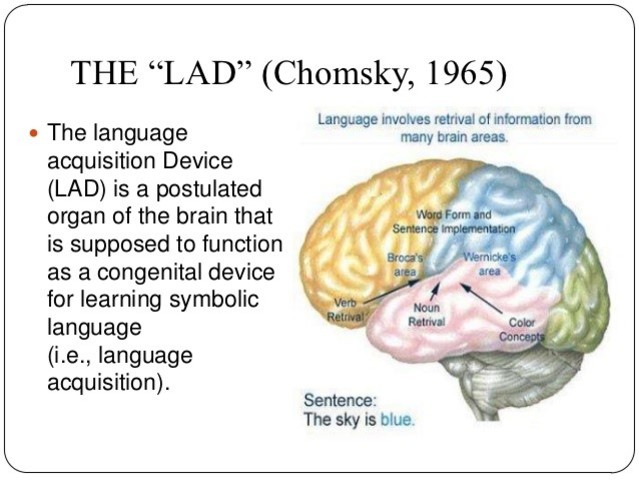[the_ad id=”476″]
Child psychology’s Past
John B. Watson and Jean-Jacques Rousseau are typically cited as providing the foundations for the modern development of child psychology. In the mid-18th century, Jean Jacques Rousseau described three stages of development: infants (infancy), puer (childhood) and adolescence in Emile: Or, On Education. Rousseau’s ideas were taken up strongly by educators at the time.
It generally focuses on how and why certain modifications throughout an individual’s life-cycle (cognitive, social, intellectual, personality) and human growth change over time. There are many theorists that have made a profound contribution to this area of psychology. For example, Erik Erikson developed a model of eight stages of psychological development. He believed that humans developed in stages throughout their lifetimes and this would affect their behaviours (Similar ideas to Sigmund Freud)
In the late 19th century, psychologists familiar with the evolutionary theory of Darwin began seeking an evolutionary description of the development of child psychology; prominent here was the pioneering psychologist G. Stanley Hall, who attempted to correlate ages of childhood with previous ages of humanity.
James Mark Baldwin wrote essays on topics that included Imitation: A Chapter in the Natural History of Consciousness and Mental Development in the Child and the Race: Methods and Processes. James Mark Baldwin was heavily involved in the theory of developmental psychology. Sigmund Freud, whose concepts were developmental, significantly affected public perceptions.
Child Psychology’s History

As a scientific discipline with a firm empirical basis, child study is of comparatively recent origin. It was initiated in 1840, when Charles Darwin began a record of the growth and development of one of his own children, collecting the data much as if he had been studying an unknown species. A similar, more elaborate study published by German psychophysiologist William Preyer put forth the methods for a series of others. In 1891 American educational psychologist G. Stanley Hall established the Pedagogical Seminary, a periodical devoted to child psychology and pedagogy. During the early 20th century, the development of intelligence tests and the establishment of child guidance clinics further defined the field of child psychology.
A number of notable 20th-century psychologists, among them Sigmund Freud, Melanie Klein, and Freud’s daughter, Anna Freud dealt with child development chiefly from the psychoanalytic point of view. Perhaps the greatest direct influence on the modern development of child psychology was Jean Piaget of Switzerland. By means of direct observation and interaction, Piaget developed a theory of the acquisition of understanding in children. He described the various stages of learning in childhood and characterized children’s perceptions of themselves and of the world at each stage of learning.
The data of child psychology are gathered from a variety of sources. Observations by relatives, teachers, and other adults, as well as the psychologist’s direct observation of and interviews with a child (or children), provide much material. In some cases, a one-way window or mirror is used so that children are free to interact with their environment or others without knowing that they are being watched. Personality tests, intelligence tests, and experimental methods have also proved useful in understanding child development.
Despite attempts to unify various theories of child development, the field remains dynamic, changing as the fields of physiology and psychology develop.
Stages of Development Hierarchy
Michael Commons enhanced and simplified Bärbel Inhelder and Piaget’s developmental theory and offers a standard method of examining the universal pattern of development. The Model of Hierarchical Complexity (MHC) is not based on the assessment of domain-specific information, it divides the Order of Hierarchical Complexity of tasks to be addressed from the Stage performance on those tasks. A stage is the order hierarchical complexity of the tasks the participant’s successfully addresses. He expanded Piaget’s original eight-stage (counting the half stages) to fifteen stages.
The stages are: 0 Calculatory; 1 Sensory & Motor; 2 Circular sensory-motor; 3 Sensory-motor; 4 Nominal; 5 Sentential; 6 Preoperational; 7 Primary; 8 Concrete; 9 Abstract; 10 Formal; 11 Systematic; 12 Metasystematic; 13 Paradigmatic; 14 Cross-paradigmatic; 15 Meta-Cross-paradigmatic. The order of hierarchical complexity of tasks predicts how difficult the performance is with an R ranging from 0.9 to 0.98.
In the MHC, there are three main axioms for an order to meet in order for the higher-order task to coordinate the next lower order task. Axioms are rules that are followed to determine how the MHC orders actions to form a hierarchy. These axioms are:
a) defined in terms of tasks at the next lower order of hierarchical complexity task action;
b) defined as the higher-order task action that organizes two or more or less complex actions; that is, the more complex action specifies the way in which the less complex actions combine;
c) defined as the lower order task actions have to be carried out non-arbitrarily.
Constructionism
Constructivism is a paradigm in child psychology that characterizes learning as a process of actively constructing knowledge. Individuals create meaning for themselves or make sense of new information by selecting, organizing, and integrating the information with other knowledge, often in the context of social interactions. Constructivism can occur in two ways: individual and social. Individual constructivism is when a person constructs knowledge through cognitive processes of their own experiences rather than by memorizing facts provided by others. Social constructivism is when individuals construct knowledge through an interaction between the knowledge they bring to a situation and social or cultural exchanges within that content.
Jean Piaget, a Swiss developmental psychologist, proposed that learning is an active process because children learn through experience and make mistakes and solve problems. Piaget proposed that learning should be whole by helping students understand that meaning is constructed.
Evolutionary Theory
Evolutionary developmental psychology is a research paradigm that applies the basic principles of Darwinian evolution, particularly natural selection, to understand the development of human behaviour and cognition. It is an integral part of the development of child psychology which involves the study of both the genetic and environmental mechanisms that underlie the development of social and cognitive competencies, as well as the epigenetic (gene-environment interactions) processes that adapt these competencies to local conditions.
EDP considers both the reliably developing, species-typical features of ontogeny (developmental adaptations), as well as individual differences in behaviour, from an evolutionary perspective.
While evolutionary views tend to regard most individual differences as the result of either random genetic noise (evolutionary by-products) and/or idiosyncrasies (for example, peer groups, education, neighbourhoods, and chance encounters) rather than products of natural selection, EDP asserts that natural selection can favour the emergence of individual differences via “adaptive developmental plasticity.” From this perspective, human development follows alternative life-history strategies in response to environmental variability, rather than following one species-typical pattern of development.
EDP is closely linked to the theoretical framework of evolutionary psychology (EP) but is also distinct from EP in several domains, including research emphasis (EDP focuses on adaptations of ontogeny, as opposed to adaptations of adulthood) and consideration of proximate ontogenetic and environmental factors (i.e., how development happens) in addition to more ultimate factors (i.e., why development happens), which are the focus of mainstream evolutionary psychology.
Attachment Theory
Attachment theory, originally developed by John Bowlby, focuses on the importance of open, intimate, emotionally meaningful relationships. Attachment is described as a biological system or powerful survival impulse that evolved to ensure the survival of the infant. A child who is threatened or stressed will move toward caregivers who create a sense of physical, emotional and psychological safety for the individual. Attachment feeds on body contact and familiarity. Later Mary Ainsworth developed the Strange Situation protocol and the concept of the secure base.
Theorists have proposed four types of attachment styles: secure, anxious-avoidant, anxious-resistant, and disorganized.
- Secure attachment is a healthy attachment between the infant and the caregiver. It is characterized by trust.
- Anxious-avoidant is an insecure attachment between an infant and a caregiver. This is characterized by the infant’s indifference toward the caregiver.
- Anxious-resistant is an insecure attachment between the infant and the caregiver characterized by distress from the infant when separated and anger when reunited.
- Disorganized is an attachment style without a consistent pattern of responses upon the return of the parent.
A child can be hindered in its natural tendency to form attachments. Some babies are raised without the stimulation and attention of a regular caregiver or locked away under conditions of abuse or extreme neglect. The possible short-term effects of this deprivation are anger, despair, detachment, and temporary delay in intellectual development. Long-term effects include increased aggression, clinging behaviour, detachment, psychosomatic disorders, and an increased risk of depression as an adult.
According to the child psychology, Attachment style can affect the relationships between people. Attachment is established in early childhood and attachment continues into adulthood. An example of secure attachment continuing in adulthood would be when the person feels confident and is able to meet their own needs. An example of anxious attachment during adulthood is when the adult chooses a partner with anxious-avoidant attachment.
Nature vs Nature
A significant issue in development of child psychology is the relationship between innateness and environmental influence in regard to any particular aspect of development. This is often referred to as “nature and nurture” or nativism versus empiricism. A nativist account of development would argue that the processes in question are innate, that is, they are specified by the organism’s genes.
An empiricist perspective would argue that those processes are acquired in interaction with the environment. Today developmental psychologists rarely take such polarised positions with regard to most aspects of development; rather they investigate, among many other things, the relationship between innate and environmental influences. One of the ways this relationship has been explored in recent years is through the emerging field of evolutionary developmental psychology.
One area where this innateness debate has been prominently portrayed is in research on language acquisition. A major question in this area is whether or not certain properties of human language are specified genetically or can be acquired through learning.
The empiricist position on the issue of language acquisition suggests that the language input provides the necessary information required for learning the structure of language and that infants acquire language through a process of statistical learning. From this perspective, language can be acquired via general learning methods that also apply to other aspects of development, such as perceptual learning.
The nativist position argues that the input from language is too impoverished for infants and children to acquire the structure of language. Linguist Noam Chomsky asserts that evidenced by the lack of sufficient information in the language input, there is a universal grammar that applies to all human languages and is pre-specified. This has led to the idea that there is a special cognitive module suited for learning language, often called the language acquisition device.

Chomsky’s critique of the behaviourist model of language acquisition is regarded by many as a key turning point in the decline in the prominence of the theory of behaviourism generally. But Skinner’s conception of “Verbal Behaviour” has not died, perhaps in part because it has generated successful practical applications.
Discover more from Centre for Elites
Subscribe to get the latest posts sent to your email.
